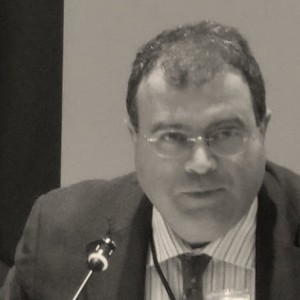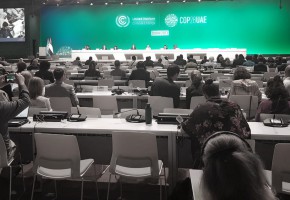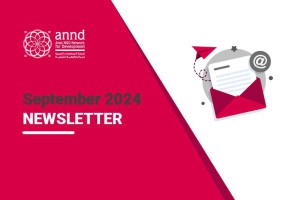

Developing Countries and COP27 - George J. Nasr
Developing countries face high stakes for COP27, as they meet in Egypt’s Sharm-El-Sheikh this November. They need to ensure that the climate summit yields better results than last year’s COP26.
In the context of our tumultuous times, the challenge this year is greater, due to rising energy and food costs, increasing inflation rates, and heightened geopolitical tensions. Yet COP27 can still succeed if developing countries advance with a clear focus on at least three topics: closing gaps in credibility, level of ambition, and mitigation.
The “credibility gap”
This credibility gap is due in part to the dual objectives outlined in the “Paris Agreement” by the hosting president. At COP21, during the leaders’ event, French President François Hollande, stated that the Paris outcome would be successful if it (1) determined a credible path to limit temperature rise below 2°C, or even 1.5°C if possible; (2) responds to climate change in a way that all parties adhere to their commitments; and (3) achieves a mobilization of all sectors of society to reaching the global goal.
This resulted in a dual goal of limiting temperature of “pursuing efforts to limit the temperature increase to 1.5°C above pre-industrial levels,” while setting a target of “holding the increase in the global average temperature to well below 2°C above pre-industrial levels.” This has the following implications:
1- We could meet the 2°C goal if all countries agreed to cut their Greenhouse Gas (GHG) emissions to Net-Zero by 2030-2050, which means “as close to zero as possible, with any remaining emissions re-absorbed from the atmosphere”. If this happens, computer modeling by the IPCC suggests this could keep the temperature increase to around 1.9°C.
2- In this context, the 1.5°C aspiration of the Paris COP21 looks less achievable. It would require us to actively remove GHGs from the atmosphere, something for which technologies are still being developed.
Raising the Level of Ambition
The current level of ambition contributes to the credibility gap and needs to be increased.
The weakness of the current Nationally Determined Contributions (NDCs) of the major emitters does more than raise doubts as to the credibility of their pathways to Net-Zero. Due to the weakness of the current NDCs, especially those of the most industrialized nations, the world is set to overshoot both of the Paris Agreement’s objectives. This was made clear by the scientific presentations made at COP26, which still forecast climate warming to reach about 2.5°C to 2.7°C under the current level of ambition.
Raising the level of ambition would require industrialized countries to:
1- Radically update their NDCs to better reflect Net Zero. They are the largest contributors to the accumulation of GHGs in the Atmosphere, with China, the United States of America, and the European Union leading the rest of the G20 by far;
2- Undertake significant effort to address Loss and Damage, an issue that will adversely affect the developing world, further hindering its own development. This is stated in the IPCC report, which demonstrated that significant losses and damages can no longer be prevented.
The challenge is therefore for industrialized countries to lead on climate ambition. This would mean either more drastic reductions of Greenhouse Gas (GHG) emission, or actively removing carbon dioxide from the atmosphere.
Adaptation with Mitigation Co-Benefits
Developing countries can increase their own level of ambition, through enhanced adaptation actions that also provide mitigation co-benefits. At COP27, progress can advance under the Work Programme on Mitigation Ambition and Implementation, as established at COP26. Support from industrialized countries will “reflect equity and the principle of common but differentiated responsibilities and respective capabilities, in the light of different national circumstances.” Industrialized countries would need to provide transparent, grant-based finance for adaptation, with a clear delivery plan and a roadmap, to support adaptation efforts, especially those with a mitigation co-benefit.
1- Clear finance targets are needed to help mobilize the private sector and other non-state actors. Developed countries had already committed to contribute USD 100 Billion by 2020, for mitigation, adaptation and loss and damage finance and for developed countries. The bulk of this financing was to come from the G7 countries, but they failed to do after COP26, “with deep regret”;
2- Successfully meeting those finance targets will require transparency beyond “action and support”. Already, the Paris Agreement outlines a binding commitment for all countries to reporting every 5 years on GHG reductions, a provision of Article 4 that is supported by a transparency provision. The parties can build on the “capacity-building Initiative for Transparency”; while it is aimed at building “institutional and technical capacity”, it could be expanded to promote a greater level of ambition from developed countries.
Keys to the Success of COP 27
The success of COP27 is tied to closing the credibility gap, by raising the level of ambition and providing adequate support for developing countries’ efforts towards their adaptation efforts.
In order to close the credibility gap, both developed and developing countries need to enhance their actions. Developing countries need to radically “update” their NDCs and long-term strategies. Developing countries need to meet their adaptation needs while pursuing low GHG development, but in “in a manner that does not threaten food production” (UNFCCC Article 2, No.1.b). To do so, it is necessary to raise the level of ambition and enhance the Loss and Damage mechanism. This is done by enduring that the Glasgow Dialogue process makes demonstrable progress and lead to tangible results.
Overall, this goal is achievable. The urgency of climate action is underscored by the IPCC Working Group II report, which finds that the threats to people, species and ecosystems will escalate with every additional 0.1°C increase in temperature.
Recent publications

Neoliberalism and Feminist Discourse: Between Assimilation and Resistance in the Arab Context

The Right to Water in Lebanon: Inequality, Ecological and Austerity Crises - Roland Riachi
Related publications

